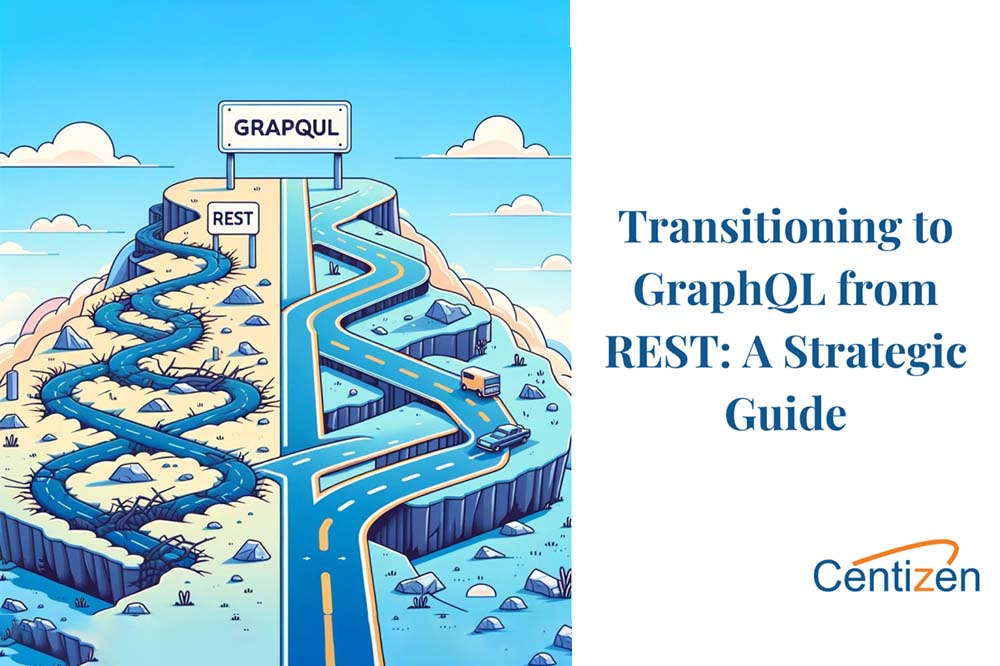Transitioning to GraphQL from REST: A Strategic Guide

In web development, GraphQL emerges as a compelling alternative to traditional RESTful architectures, offering enhanced flexibility, efficiency, and scalability. Below, I outline the crucial steps and considerations for integrating a GraphQL solution atop an existing REST architecture.
1. Understanding and planning
- Learning curve: Familiarizing your team with GraphQL’s fundamentals types, queries, mutations, and subscriptions is the first step. Mastery of these concepts and the GraphQL schema definition language is essential.
- Assessing the current API: Evaluate your existing REST API to see how its structure can transition into GraphQL types, considering the underlying data relationships.
2. Setting up graphQL
- Choosing the right tools: Tools such as Apollo Server, Express GraphQL, and GraphQL Yoga integrate seamlessly with various backend technologies, including Node.js. Selecting the right tools that complement your tech stack is crucial.
- Implementing a graphQL server: Establish a GraphQL server to act as middleware. This setup allows your team to process queries and utilize existing REST endpoints, facilitating a smoother transition.
3. Schema definition
- Define schemas: Craft GraphQL schemas that outline data access strategies. This includes establishing types, queries, mutations, and subscriptions for real-time features.
- Resolvers: Develop resolvers – functions linking GraphQL queries with data sources. Initially, these may continue to interact with your REST APIs to retrieve data.
4. Iterative integration
- Gradual transition: Introduce GraphQL incrementally, starting with operations that benefit most from its capabilities, such as complex client-side data requirements.
- Refactoring over time: As your team gains confidence and the advantages of GraphQL become apparent, progressively shift more functionality from REST to GraphQL.
5. Optimization and performance
- Performance considerations: Monitor how GraphQL queries affect your existing services. Utilizing tools like Apollo Engine can aid in performance tuning and implementing effective caching strategies.
- Security and rate limiting: Address security by limiting query depths and other measures to prevent excessive backend loads, which are potential issues due to GraphQL’s flexible querying options.
6. Client-side adaptation
- Updating clients: Update client applications to handle GraphQL queries. Libraries such as Apollo Client and Relay simplify this integration with popular frontend frameworks like React, Angular, or Vue.js.
Conclusion
Though the shift from REST to GraphQL entails a complexity that cannot be understated, the long-term benefits are significant. A thoughtful, phased approach beginning with education and small-scale experimentation, followed by gradual integration and ongoing optimization is essential. By strategically implementing GraphQL, organizations can greatly improve their data handling capabilities, making it a strategic investment in today’s data-driven environment.
Explore Centizen Inc’s comprehensive staffing solutions, custom software development and innovative software offerings, including ZenBasket and Zenyo, to elevate your business operations and growth.
Centizen
A Leading IT Staffing, Custom Software and SaaS Product Development company founded in 2003. We offer a wide range of scalable, innovative IT Staffing and Software Development Solutions.
Contact Us
USA: +1 (971) 420-1700
Canada: +1 (971) 420-1700
India: +91 63807-80156
Email: contact@centizen.com
Our Services
Products
Contact Us
USA: +1 (971) 420-1700
Canada: +1 (971) 420-1700
India: +91 63807-80156
Email: contact@centizen.com






